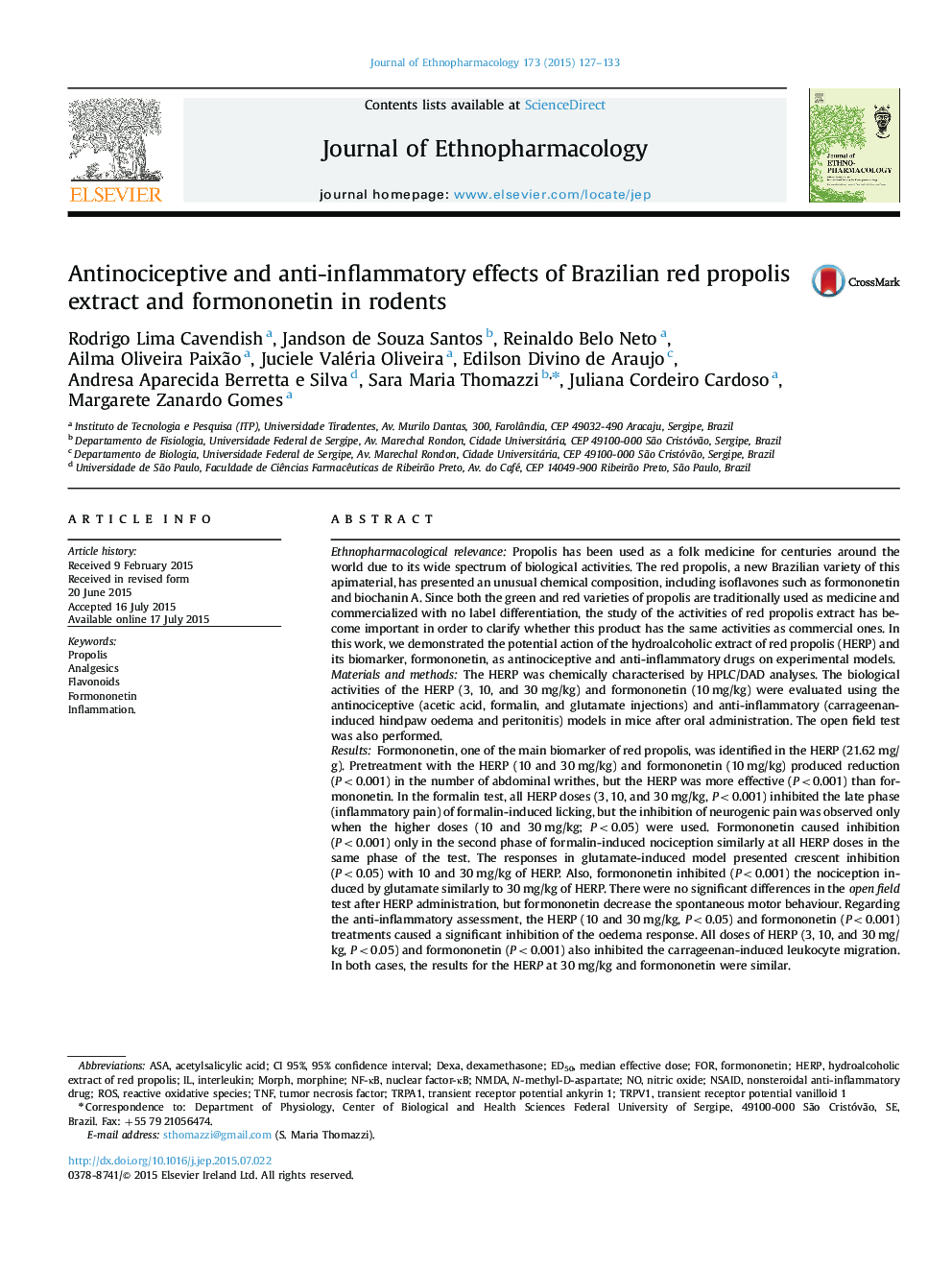| کد مقاله | کد نشریه | سال انتشار | مقاله انگلیسی | نسخه تمام متن |
|---|---|---|---|---|
| 5835023 | 1560389 | 2015 | 7 صفحه PDF | دانلود رایگان |
Ethnopharmacological relevancePropolis has been used as a folk medicine for centuries around the world due to its wide spectrum of biological activities. The red propolis, a new Brazilian variety of this apimaterial, has presented an unusual chemical composition, including isoflavones such as formononetin and biochanin A. Since both the green and red varieties of propolis are traditionally used as medicine and commercialized with no label differentiation, the study of the activities of red propolis extract has become important in order to clarify whether this product has the same activities as commercial ones. In this work, we demonstrated the potential action of the hydroalcoholic extract of red propolis (HERP) and its biomarker, formononetin, as antinociceptive and anti-inflammatory drugs on experimental models.Materials and methodsThe HERP was chemically characterised by HPLC/DAD analyses. The biological activities of the HERP (3, 10, and 30Â mg/kg) and formononetin (10Â mg/kg) were evaluated using the antinociceptive (acetic acid, formalin, and glutamate injections) and anti-inflammatory (carrageenan-induced hindpaw oedema and peritonitis) models in mice after oral administration. The open field test was also performed.ResultsFormononetin, one of the main biomarker of red propolis, was identified in the HERP (21.62Â mg/g). Pretreatment with the HERP (10 and 30Â mg/kg) and formononetin (10Â mg/kg) produced reduction (P<0.001) in the number of abdominal writhes, but the HERP was more effective (P<0.001) than formononetin. In the formalin test, all HERP doses (3, 10, and 30Â mg/kg, P<0.001) inhibited the late phase (inflammatory pain) of formalin-induced licking, but the inhibition of neurogenic pain was observed only when the higher doses (10 and 30Â mg/kg; P<0.05) were used. Formononetin caused inhibition (P<0.001) only in the second phase of formalin-induced nociception similarly at all HERP doses in the same phase of the test. The responses in glutamate-induced model presented crescent inhibition (P<0.05) with 10 and 30Â mg/kg of HERP. Also, formononetin inhibited (P<0.001) the nociception induced by glutamate similarly to 30Â mg/kg of HERP. There were no significant differences in the open field test after HERP administration, but formononetin decrease the spontaneous motor behaviour. Regarding the anti-inflammatory assessment, the HERP (10 and 30Â mg/kg, P<0.05) and formononetin (P<0.001) treatments caused a significant inhibition of the oedema response. All doses of HERP (3, 10, and 30Â mg/kg, P<0.05) and formononetin (P<0.001) also inhibited the carrageenan-induced leukocyte migration. In both cases, the results for the HERP at 30Â mg/kg and formononetin were similar.ConclusionsThe HERP and formononetin presented significant anti-inflammatory activity. Moreover, the HERP presented antinociceptive action on inflammatory and neurogenic pain without motor side effects, possibly due to the action of other constituents present in the extract. These results, together, support the popular usage of this natural product.
281
Journal: Journal of Ethnopharmacology - Volume 173, 15 September 2015, Pages 127-133
